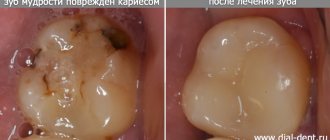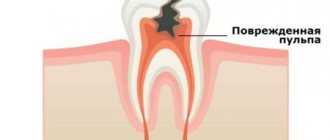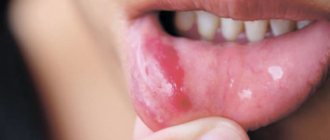Have questions?
Herpetic or herpes stomatitis is an inflammation of the oral mucosa caused by the herpes simplex virus. The disease manifests itself as ulcers in the mouth, headache and even fever.
This type of stomatitis accounts for about 80% of all infectious lesions of the oral cavity. The infection mainly develops in children's bodies, and children under three years of age are most susceptible to it. HIV carriers, diabetics, patients with chronic pathologies and people with weakened immune systems are also at risk.
Clinical manifestations
Symptoms of herpetic stomatitis vary depending on the form and stage of progression of the disease. Common signs of a viral infection include:
- swelling of the cervical and submandibular lymph nodes;
- jump in body temperature;
- blisters on the mucous membrane of the cheeks, tongue, palate, which are damaged and turn into bleeding ulcers and erosive formations;
- discomfort, pain, burning, itching in the mouth;
- weakness, migraine.
In adults, viral herpetic stomatitis is more complicated. At the same time, a severe form of the disease often develops in people who had an acute stage of the disease in childhood, and at the moment their body is weakened due to severe hypothermia, blood disease, cancer, etc.
Acute and chronic herpetic stomatitis
What is stomatitis? What types of stomatitis are more common?
Stomatitis is the general name for diseases that cause inflammation of the oral mucosa.
Among stomatitis, the most commonly diagnosed varieties are those that have a viral basis. Herpetic stomatitis, which is caused by the herpes simplex virus, is especially common.
Clinically, in the oral cavity, herpes infection manifests itself in two forms: 1) chronic recurrent herpes; 2) acute herpetic gingivostomatitis.
Acute herpetic stomatitis is a disease of viral etiology that occurs in both adults and children. Recently, acute herpetic stomatitis is considered as a manifestation of primary herpetic infection with the herpes simplex virus in the oral cavity. The first elements of damage in acute herpetic stomatitis resemble aphthae, which occur against the background of edematous, hyperemic, inflamed oral mucosa. The disease is contagious for individuals who have not previously been infected with the herpes simplex virus. Stomatitis mainly affects children aged 1 to 3 years and young adults.
The disease begins with complaints of general malaise, with an increase in body temperature to 37-37.5 ° C, enlargement of regional lymph nodes, and hypersalivation is observed. The mucous membrane of the mouth, especially the gingival margin, is swollen and hyperemic. At the same time, vesicles filled with serous fluid appear, which then quickly open and merge into erosions, covered with fibrinous plaque, with a scalloped edge along the periphery. The entire process of aft formation lasts four to five days. In this case, the patient complains of pain when eating, burning, itching. If oral care is insufficient, then catarrhal changes (swelling, hyperemia) can turn into ulcerative ones. With proper care and treatment, the patient recovers by the eighth to tenth day. If the disease progresses, the number of erosive elements does not decrease, but increases, the patient’s general condition worsens, weakness, headache, adynamia are observed, body temperature rises to 39–40 ° C, then this may be due to low reactivity of the body, decreased immunity. The body's reactivity depends on various reasons - hypothermia, flu, infectious diseases, blood diseases, cancer. If the necessary treatment of acute herpetic stomatitis is not carried out, a recurrent form occurs, which is accompanied by regular rashes on the mucous membrane of the cavity of vesicles and aphthae.
In the pathogenesis of the disease there are four periods: prodromal, catarrhal, period of rash, period of extinction of the disease. According to the degree of severity, there are mild, moderate, and severe forms.
With a mild form of the disease, there are no symptoms of intoxication of the body. The lesions appear in the form of two or three small bubbles. Epithelization of the mucous membrane occurs quickly.
The moderate form is accompanied by severe toxicosis. Multiple rashes appear on the oral mucosa.
In the severe form, all the signs of an infectious disease are expressed.
A blood test reveals leukopenia, an increase in band neutrophils; saliva reaction is acidic.
Diagnosis of herpetic stomatitis is a difficult task and is based on the use of special molecular biological, virological, serological, cytological and immunological studies.
Treatment of stomatitis can be difficult due to concomitant infection. It includes the prescription of painkillers (gels with lidocaine, articaine topically on the oral mucosa, orally - ketorolac (ketorol, ketalgin)), antiviral drugs (acyclovir or Zovirax orally and topically as an ointment), anti-inflammatory drugs (cholisal, metrogil gel ) and immunomodulators.
Chronic recurrent herpes manifests itself in the form of single or multiple closely spaced rashes - small blisters on the red border of the lips, mucous membrane of the palate, eyes, genitals, skin of the lips, wings of the nose. Usually the appearance of these lesions is accompanied by a burning sensation. Further, the elements merge and form erosive surfaces, and when eating food, painful sensations from irritants occur. A feature of herpes infection is lifelong carriage of the virus after illness.
E. A. Makovskaya, Candidate of Medical Sciences, Geomed Medical Center, Moscow
Note!
- Herpetic stomatitis, which is caused by the herpes simplex virus, is especially common.
- Acute herpetic stomatitis is a disease of viral etiology that occurs in both adults and children.
- Stomatitis mainly affects children aged 1 to 3 years and young adults.
- In the pathogenesis of the disease there are 4 periods: prodromal, catarrhal, period of rash, period of extinction of the disease. According to the degree of severity, there are mild, moderate, and severe forms.
- Diagnosis of herpetic stomatitis is based on the use of special molecular biological, virological, serological, cytological and immunological studies.
- With proper care and treatment, the patient recovers by 8-10 days.
Classification of the disease
Before starting treatment for herpes stomatitis, it is necessary to determine the form and degree of its progression. At the same time, acute herpetic stomatitis in children is diagnosed already when the virus first enters the body.
The severity of the disease is divided into:
- Light. Small blisters form on the oral mucosa - they quickly disappear after they rupture;
- Average. The rashes are more extensive, body temperature rises (up to 38º);
- Heavy. The patient has an abundance of ulcers in his mouth, and after they disappear, new ones appear. Symptoms are supplemented by fever, headache and chills, sometimes the patient feels sick and has diarrhea.
In the absence of proper treatment, chronic recurrent herpetic stomatitis develops. This form of the disease is already characterized by group rashes (on the inside of the cheeks, tongue and palate). The formations combine and form painful erosions. In the recurrent stage, except for rashes, no other symptoms of the disease are noted. The disease may return 2-6 months after treatment.
Herpes stomatitis in children is a serious illness that requires immediate medical attention.
You probably know that more than 90% (and according to some sources, all 98%) of the population of our planet are carriers of the herpes virus. Most people live their lives and have no idea about it; for some, the presence of herpes manifests itself only as watery, quickly passing ulcers on the lips during a cold.
But for some, this harmful virus can bring a lot of trouble - genital herpes, herpes zoster, postherpetic neuralgia and herpes stomatitis, which also happens in children. Children under 3 years of age are more likely to get sick, and acute herpetic stomatitis in children . This is a rather serious disease that requires immediate medical intervention, as it has a complex course and is accompanied by a high fever - up to 40°, which is dangerous for young children due to possible seizures and other complications.
Manifestation of herpes stomatitis
Parents are interested in how herpes manifests itself in the mouth, how to distinguish it from other inflammatory diseases and how to treat viral stomatitis . The disease begins with a catarrhal period, when bright red spots appear on the gums, inside the cheeks and lips, causing obvious discomfort to the child because they itch and tingle. If older children immediately draw the attention of their parents to this pathology, then the children simply become irritable, whiny, and stop eating. In children, the temperature rises almost immediately, so the onset of herpes stomatitis is often mistaken for a sore throat or acute respiratory viral infection and the moment of starting treatment for stomatitis is missed. A day later, whitish bubbles appear in place of the spots, which burst and turn into ulcers, which are very painful for the baby. At the same time, enlargement of the lymph nodes is often observed, there may be vomiting, dyspeptic symptoms - diarrhea, rumbling in the abdomen.
Treatment of herpes stomatitis
In acute cases of herpes stomatitis, hospitalization of the child is almost always indicated. If the course of the disease is mild and is not accompanied by fever or other complications that can only be determined by a doctor, treatment at home is possible. In this case, the sick child should be isolated as much as possible from other family members so as not to infect them too. If a diagnosis of herpetic stomatitis in children is established, treatment has some features than for other types of stomatitis. Firstly, this is a local treatment - rinsing with antiseptic solutions (to prevent secondary infection of erosions) using a solution of pimafucin, sage or chamomile decoctions. Children over 1 year old can treat their mouths with propolis, which gives very good results.
How to quickly cure stomatitis in a child under 1 year old - in the article “Treatment of stomatitis in infants. In any case, a course of acyclovir (Zovirax) will be prescribed to lubricate the gums and tongue, for older children - in the form of tablets, after which keratoplasty is prescribed - substances that actively restore damaged oral mucosa - vitamin A, sea buckthorn or rosehip oil, Vinylin ointment . So that the baby can eat - before eating, you can lubricate the painful areas with Baby Doctor ointment, Kalgel, etc. as prescribed by the doctor. At the same time, a course of vitamins and immunomodulators is prescribed to improve immunity. If herpes stomatitis is detected on time and appropriate treatment is prescribed, it is completely cured (but the herpes virus remains in the body forever).
How to treat herpetic stomatitis?
Treatment of herpetic stomatitis in children and adults can be general or local. The therapeutic treatment strategy is determined by the form and severity of the disease. In this case, the patient is usually shown:
- high-calorie diet, drinking plenty of fluids, bed rest;
- antiviral drugs (orally, intravenously or intramuscularly);
- restorative therapy (taking vitamins);
- symptomatic treatment (use of antipyretics, painkillers, anti-inflammatory drugs);
- local therapy (rinses, applications, etc.).
When choosing tactics for treating acute or chronic herpetic stomatitis in adults and children, it is important to correctly determine the form and stage of the disease. That is why experts urge patients not to self-medicate, but to immediately consult a doctor if signs of damage appear.
Therapy under the supervision of a specialist will allow you to recover quickly and without consequences for the body. With the right approach, herpes stomatitis in a child or adult can be cured in 10-14 days.
What can cause stomatitis?
Many factors can lead to inflammation of the mucous membrane: from banal mechanical damage to disruptions in the body that are not related to the dentist’s field of work.
The following causes lead to stomatitis :
- neglect of oral hygiene recommendations;
- injury to the mucous membrane from sharp edges of teeth or fillings, dentures or other objects;
- dental diseases - caries, tartar, etc.;
- allergies - not only to food, but also to hygiene products and even dental materials;
- various diseases - from viral to endocrine, such as diabetes;
- poorly made prostheses;
- expired prostheses;
- metabolic or immune disorders;
- problems with microflora in the body;
- direct contact with the mucous membrane of pathogenic microorganisms;
- bad habits - smoking, drinking strong alcohol;
- reaction to certain medications.
The mucous membrane is much easier to damage than the skin. Especially in the mouth, where it is always exposed to temperature changes, touched by teeth, dentures, braces and solid food particles.
The cause of dental disease is mainly pathogenic bacteria (for example, caries is caused by streptococcus), which also harm the gums. And tartar is a hardened plaque that contains not only microbes, but also other unfavorable components. In addition, if the stone is subgingival, then the mucous membrane suffers first.
In many cases, allergies are discovered suddenly. The patient may not be aware of its presence, since he calmly eats any food. However, chemicals in toothpaste or mouthwash can cause a reaction. Studies have shown a negative effect on the mucous membranes of sodium lauryl sulfate, contained in some toothpastes. If the problem began soon after the restoration or treatment of the tooth, then you should consider the possibility of the body's response to the filling or crown material.
Decreased immunity can also cause deterioration of gums. And metabolic disorders affect not only the supply of microelements to the body’s tissues (including the mucous membrane), but also the composition of saliva, a decrease in the protective properties of which makes the oral cavity vulnerable to bacteria. Approximately the same can be said about the beneficial microflora: if it is in order, it helps to suppress the work of harmful microorganisms; if it is disrupted, the microbes attack vulnerable areas.
The cause of stomatitis in adults and children can be obvious - direct entry into the mouth of a large number of pathogenic bacteria. They can get from contaminated surfaces. Simply put, if a child constantly puts various objects into his mouth, stomatitis may occur. If an adult has carried through the years the bad habit of biting nails or pens, this can also contribute to the appearance of inflammation.
Medicines can have different effects on the body, in particular, they can affect the immune system, microflora and saliva production. Dry mouth is promoted by antihistamines and antihypertensive drugs, anticoagulants, antipsychotics, antispasmodics, etc. And a low level of saliva production provokes the growth of bacteria. Antibiotics and anti-asthma medications can lead to Candida infections in the mouth. There can be many options, including the influence of the sugar contained in the medicine. stomatitis often appears in adults as a result of treatment for a completely different pathology.











